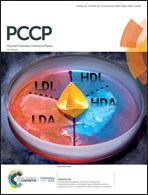A theoretical insight into furfural conversion catalyzed on the Ni(111) surface†
Abstract
Biomass-derivatives, e.g., furfural, have been widely reported to become new-generation renewable sources of chemicals and fuels. However, it is too complicated to understand the product selectivity of furfural conversion in diverse reactions. Accordingly, by using density functional theory calculations, both the hydrodeoxygenation and decarboxylation of furfural on the Ni(111) surface to form furan, 2-methylfuran, furfuryl alcohol, tetrahydrofuran, and tetrahydrofurfuryl alcohol have been thoroughly investigated. On the basis of the minimum energy path, furfural decarbonylation leads to the formation of furan via F-CHO + 2H → F + CO + 2H → F + CO + H → F-H, and then tetrahydrofuran forms via sequential hydrogenation on the carbon atoms of the furan ring, while furfuryl alcohol (F-CHO + 2H → F + CHOH + H → F-CH2OH) can be obtained via furfural hydrogenation. More importantly, 2-methylfuran tends to form through the hydrodeoxygenation reaction, and tetrahydrofurfuryl alcohol is generated via furfural hydrogenation, which is realized with furfuryl alcohol identified as the likely intermediate. Overall, among all these products, furan is a dominant product. More importantly, it has been found that different types of metal doping will also lead to different adsorption configurations of the reactants. These findings should provide guidance in catalyst design for converting furfural to value-added products.



 Please wait while we load your content...
Please wait while we load your content...